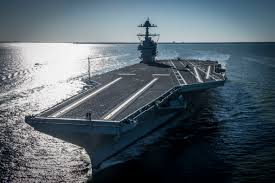Exploring the USS Gerald R Ford: A New Era in Naval Aviation

Introduction
The USS Gerald R Ford (CVN-78), commissioned in July 2017, represents a pivotal advancement in naval technology and design in the United States Navy. As the first ship of its class, the Gerald R Ford showcases cutting-edge innovations intended to enhance the effectiveness and efficiency of naval operations. With increasing global tensions and the evolving landscapes of military power, understanding the capabilities and significance of the USS Gerald R Ford is more important than ever.
Key Features and Innovations
The USS Gerald R Ford boasts several groundbreaking features that set it apart from its predecessors. Among the most notable are its Electromagnetic Aircraft Launch System (EMALS) and Advanced Arresting Gear (AAG), which replace traditional steam catapults and arrestor wires, respectively. These systems allow for smoother and more efficient launching and recovery of aircraft, thus increasing sortie generation rates.
Additionally, the carrier is equipped with a new radar system known as the SPY-3, which provides enhanced surveillance and target tracking capabilities. This advanced technology ensures that the USS Gerald R Ford maintains superiority in the air and sea. The ship also features a redesigned hull that improves overall buoyancy and stability, thereby enhancing both speed and agility.
Recent Developments
The USS Gerald R Ford has recently been involved in various exercises that demonstrate its capabilities and versatility. For instance, it participated in the multinational exercise Formidable Shield in May 2023, which aimed at testing integrated air and missile defence systems. The carrier proved essential in coordinating operations with allied navies, showcasing its role as a central asset in joint military operations.
Moreover, the USS Gerald R Ford has begun its first deployment to the Indo-Pacific region, a strategic decision in response to increasing naval activities from rival nations in the area. This deployment underlines the carrier’s significance in maintaining peace and stability in crucial maritime areas.
Conclusion
The USS Gerald R Ford is not only a marvel of modern engineering but also a symbol of the United States’ commitment to maintaining its naval supremacy. With its advanced technology and capabilities, the carrier is poised to play a vital role in future military operations. As geopolitical dynamics continue to evolve, the USS Gerald R Ford will remain a cornerstone of US naval power and a deterrent against potential threats, making it a significant asset in ensuring global security.
